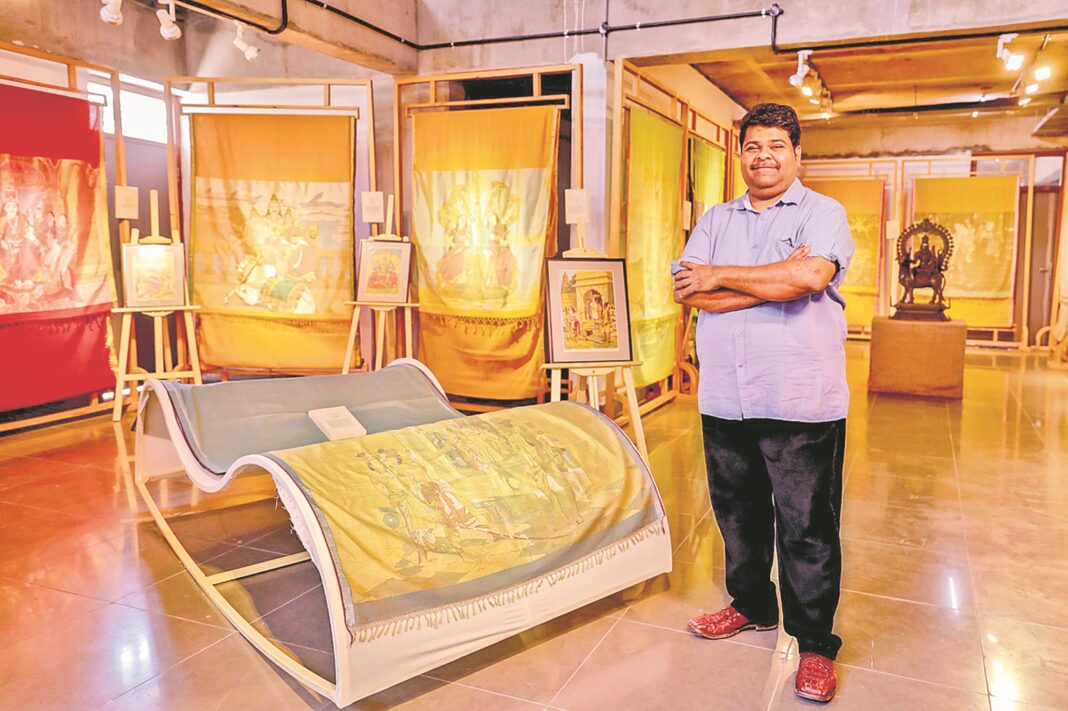Surrounded by the rustle of silks and the quiet confidence of handcrafted textiles, Gaurang Shah’s journey began in his father’s saree store in Hyderabad, where fabric became his first language and heritage his guiding instinct. With no formal design training, he grew into one of India’s most revered revivalist designers—redefining the place of handlooms in modern couture through his deeply researched, emotionally resonant creations. Over the past two decades, he has revived endangered weaves like Jamdani, Uppada, Khadi, Kanjeevaram and Paithani, while empowering over 7,000 weavers, training hundreds of first-generation women artisans, and expanding loom clusters across Telangana and Andhra Pradesh. His saris are not seasonal statements but timeless cultural artefacts—seen in the intricate recreations for the National Award-winning film Mahanati, and most recently, in the bespoke Jamdani saree designed for Smriti Irani’s legendary character Tulsi, a tribute woven with reverence and narrative depth. Gaurang’s handlooms have graced global platforms too, most notably when he dressed all 60 Miss World contestants in woven saris, showcased at India’s most iconic heritage sites—turning every drape into a dialogue of identity, craft, and pride. His passion extends beyond the loom, into the culinary revival of forgotten vegetarian traditions with Gaurang’s Kitchen, and into curatorial experiments like INTERLACE, where he positions Jamdani as living, museum-worthy art. As he puts it, “The saree is not just cloth — it is a second skin of history, heritage, and emotion.”
In a heart-to-heart conversation with The Pioneer’s Tejal Sinha, Gaurang Shah opens up about his inspiring journey, sharing glimpses of his childhood, formative years, and the moments that ignited his passion and shaped his visionary path.
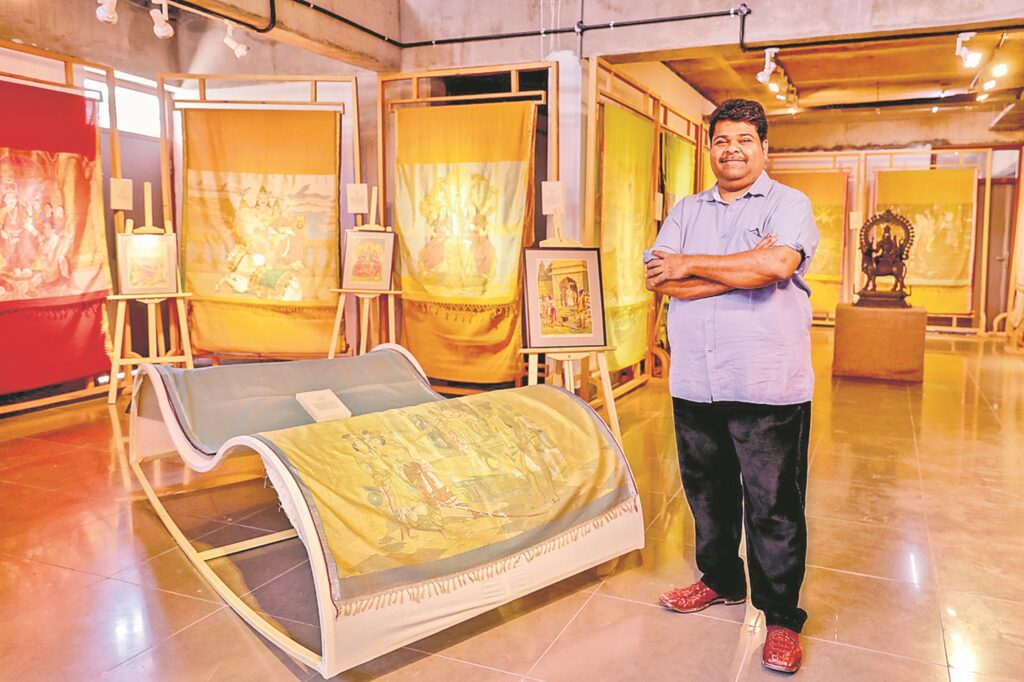
Childhood wrapped in silk
I was quietly curious, always soaking in everything around me. The rustle of silks, the lively chatter of women discussing sarees, the careful pairing of blouses in my father’s shop—all of it fascinated me. I may not have spoken much, but my mind buzzed with questions and wonder.

———————————————————
Playground of handlooms
I grew up in a traditional Gujarati household in Hyderabad. My parents were deeply rooted in their values, yet they gave me the space to observe and explore the world in my own way. The store was my playground, and amidst those shelves of handloom sarees, I was gently encouraged to follow whatever stirred my soul.
————————————————————
Tactile lessons from my mother
I still remember how my mother draped her handloom sarees—there was an elegance, a quiet strength in her grace. I would run my fingers over the textures, trying to understand what made each weave so special. That tactile memory has never left me.
————————————————————-
The Art of Sarees, Taught by Dad
My father gave me my first lessons in colour, texture, and what women truly look for in a saree. My mother, unknowingly, became my model for beauty and purity in handlooms. Their love for heritage and timeless textile traditions laid the foundation for my own deep reverence for Indian textiles.
——————————————————————————
Designer in the making
It was a gradual awakening. I wasn’t formally trained in design, but every moment spent in that store—as a schoolboy wandering in after class—felt like a masterclass. I watched how women responded emotionally to different weaves, how they yearned for something new, something unseen. They weren’t just buying sarees; they were seeking pieces that reflected their identity. That’s when the seed was sown. I knew I wanted to create something that touched them deeply—something rooted in tradition, yet refreshingly contemporary.
———————————————————————————–
Never afraid to break conventions
Yes, there was skepticism. But being self-taught gave me the freedom to be instinctive. I learned through deep interactions—with weavers, with looms, and through every mistake along the way. My education came from the grassroots, and that has been my greatest strength. I was never afraid to break conventions. I explored designs others hadn’t dared to venture into.
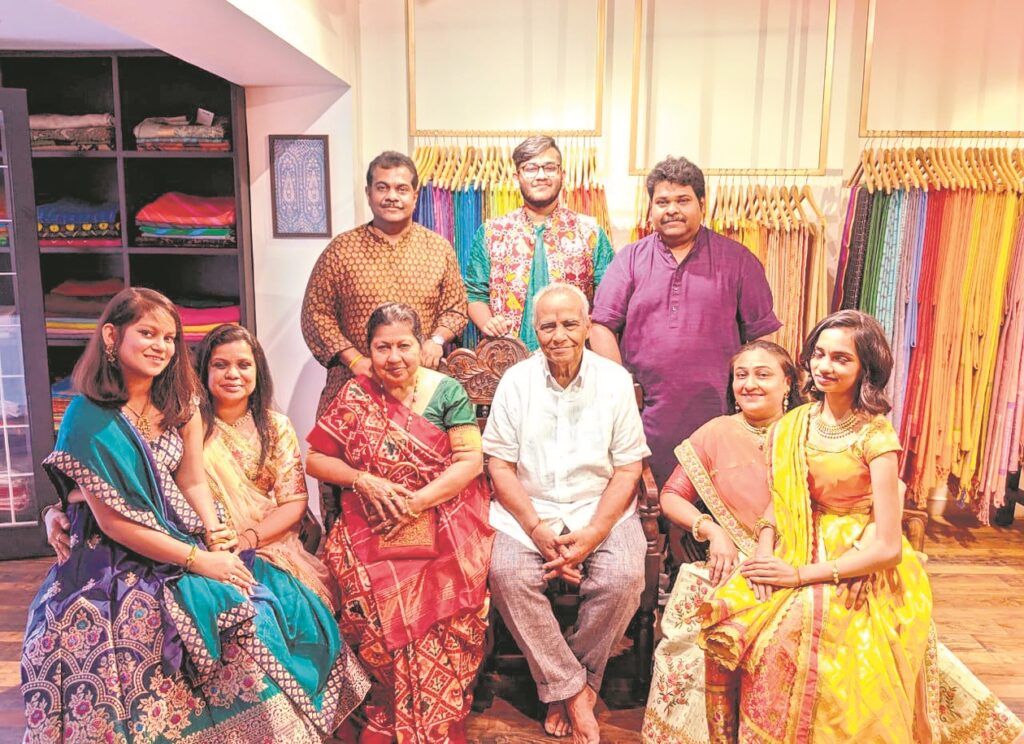
——————————————————————-
Weaving Patience
Convincing people to choose intricacy over the instant gratification of fast fashion wasn’t easy. Jamdani is slow fashion in its purest form. But I believed in its poetry. The real challenge was to make people pause long enough to see the magic in every handwoven detail—and slowly, they did.
————————————————————–
Six Yards Jamdani That Stayed
Yes, it was a simple six-yard Jamdani saree with temple motifs and a bold, wide border—something that hadn’t been attempted before. I remember the weaver hesitating; he wasn’t used to such intricate detailing. But when it was finally completed, it felt like we had created something sacred. That saree still lives in my heart.
——————————————————————-
When Kirron Kher walked the ramp
When the iconic Kirron Kher walked the ramp draped in a breathtaking ivory brocade sari, it wasn’t just a showstopper—it was a statement. That moment marked a turning point in Indian fashion. For the first time, the sari—timeless, rooted, and majestic—claimed the spotlight not as a nostalgic garment, but as couture, worthy of the same reverence as any global silhouette. It was more than a ramp walk; it was a celebration of India’s rich textile heritage, of handwoven luxury, of craftsmanship passed down through generations. The way she carried that sari—with grace, dignity, and pride—resonated far beyond the fashion world. It gave long-overdue recognition to the weavers behind the fabric and reaffirmed that tradition can be the most powerful form of modern expression.
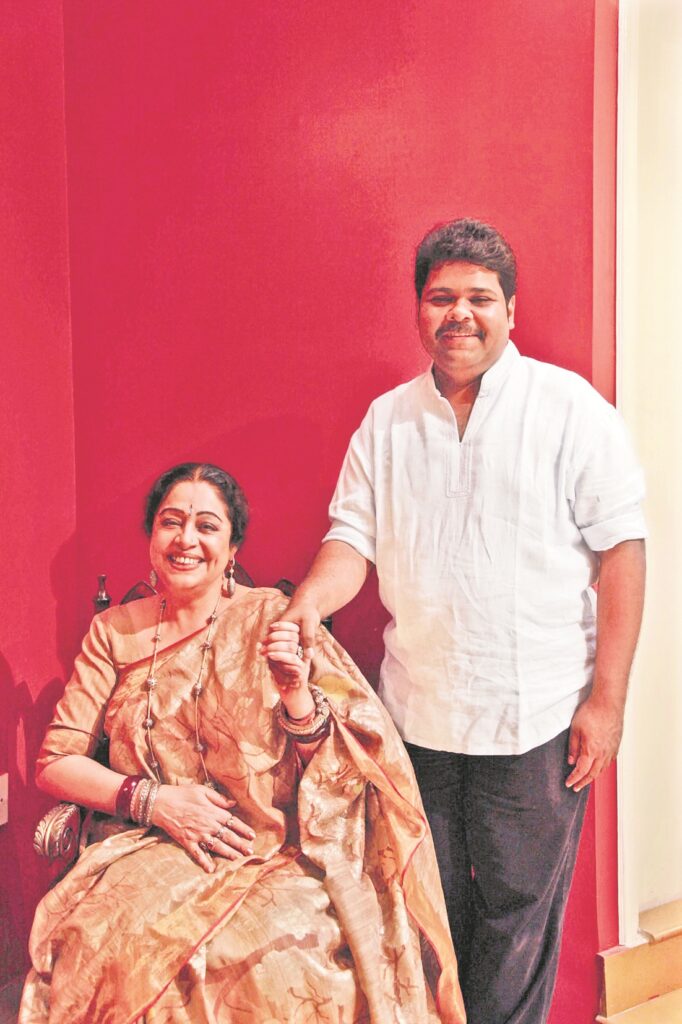
———————————————————————–
Weaving lives & hopes
It was transformative. Weavers who once left in search of labor returned to their looms. Cross-training brought them dignity, financial stability, and pride. Watching their children attend school because of weaving has been the most rewarding chapter of my journey. Even more gratifying has been training over 300 women—many of whom had never touched a loom before—and empowering them to embrace the art of weaving. This gave them not only a livelihood but also a profound sense of pride, purpose, and creative expression. One of the most fulfilling milestones has been expanding our loom clusters from just 10 to over 100 across Andhra Pradesh and Telangana. By cross-training weavers from diverse backgrounds, we fostered a vibrant ecosystem where tradition met reinvention. It wasn’t just about skill-building; it was about restoring pride, building sustainable communities, and weaving hope into every thread.
——————————————————-
Collaborating with Tradition
Jamdani, without question, has been both the most demanding and the most humbling. It’s a weave of silence and soul—each motif handwoven into the fabric, never embroidered or printed. It demands immense patience, precision, and a deep spiritual connection with the loom. Innovating within the language of Jamdani while preserving its ethereal delicacy has been both a challenge and a privilege. Transforming Paithani was equally delicate. Its identity is deeply tied to royal lineage—the peacocks, lotuses, and gold zari borders are sacred icons. To modernize it meant reimagining its narrative without disturbing its grace. Striking that balance—retaining grandeur while making it relevant for contemporary tastes—took time and care. Kanjeevaram, with its bold colors and temple borders, carries a strong personality. We softened its palette, introduced storytelling elements in its motifs, and brought in unexpected drapes—all while honoring its powerful South Indian legacy. Uppada offered a canvas of lightness and fluidity, allowing me to experiment with painterly Jamdani motifs and layered textures. It became a perfect base to blend tradition with art, especially in interpretive works like “Khadi – A Canvas.” Each weave has its own ego, its own pride. You cannot impose change—you must earn its trust. My role has always been that of a respectful collaborator, not a disruptor. That, I believe, is the only way to breathe new life into heritage.
———————————————————————————–
Jamdani as canvas
I see Jamdani not just as fabric, but as a canvas. “INTERLACE” was born from a desire to elevate the perception of handlooms—the graceful, timeless textiles and artistry from across India—and to show that they can hold their own in a museum, alongside paintings and sculptures. It’s living art.
—————————————————————–
Mythology Woven in Fabric
It was deeply emotional. We recreated his paintings thread by thread, color by color, using the loom as our brush. Khadi gave us the texture of antiquity, and the weavers infused it with soul. It was a true tribute to two Indian legacies. My fascination with art deepened when I first encountered Raja Ravi Varma’s paintings. His work captured the essence of India’s mythology and classical beauty, rendered in a way that was both human and divine. When I looked at his depictions of Lord Vishnu or the tender bond between Yashoda and Krishna, I saw the invisible threads that connected art, mythology, and the divine. These were the stories I wanted to tell—not with paint, but through the loom.
————————————————————-
Translating Devotion into Fabric
Faith was my compass. Every weave spoke its own dialect, and through colour, motif, and texture, we translated devotion into textile. It was like composing a symphony—each region contributed a note, but the melody was always Shreenathji. For this creative project, I used the Jamdani weaving techniques from Srikakulam, Venkatgiri, and Srinagar, in a collection titled स्वरूप. Each panel featuring Shreenathji highlighted the intricate, labor-intensive process that defines Jamdani—one of the most complex hand-weaving techniques in the world. The geometric patterns of Srikakulam Jamdani were meticulously adapted to craft the divine silhouette of Shreenathji. Venkatgiri’s soft and subtle weave enhanced the deity’s serene expression, while Srinagar’s bold motifs brought out the grandeur of Shreenathji’s form.
—————————————————————————
Draping handlooms— Vidya Balan, Sonam, Tabu…….
There’s an innate grace in the way Vidya Balan drapes a handloom sari—it feels lived-in, as if it belongs to her story. She doesn’t wear it for effect; she wears it as an extension of her identity, and that’s incredibly powerful. With Sonam Kapoor, the sari becomes a canvas for bold reinterpretation. She carries heritage with a high-fashion sensibility, opening exciting new dialogues for handlooms on global platforms. Tabu brings a quiet intensity. There’s something soul-stirring in the way she wears a sari—minimal, effortless, yet deeply rooted. She lets the weave speak, and in that silence lies profound elegance. Each of them reflects a different facet of the sari’s personality—classic, contemporary, and contemplative. For a designer, that is the greatest gift: to see your creations come alive in such beautifully distinct ways.
————————————
Recreating textile history with Mahanati
It was surreal. We recreated a textile history—each era demanding research, accuracy, and love. I wanted the costumes to speak, to reflect Savitri’s grace, vulnerability, and strength. Winning the award was a validation of craft. Mahanati was not just a film—it was a tribute to a golden era and a legend who defined grace, strength, and stardom. Dressing Savitri on screen meant more than recreating looks; it meant resurrecting the soul of a time gone by, thread by thread. We immersed ourselves in six months of intensive research—scouring black-and-white photographs, old studio archives, and personal anecdotes to understand not just what Savitri wore, but how she felt in her clothes.
————————————————
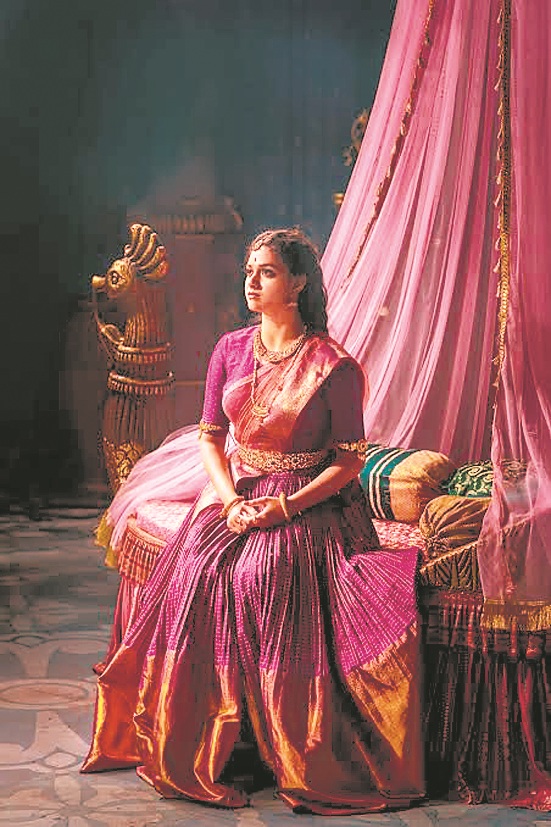
Hundred Hands Wove National award
Then came the real magic: over a hundred artisans came together, weaving, dyeing, and crafting for over a year to build an authentic textile universe worthy of her legacy. From crisp Mangalagiri cottons to the opulence of Kanjeevarams, from delicate Kota silks to the soft romance of handwoven chiffons and organzas—each fabric was chosen to reflect a moment in her journey. We even recreated the nuanced textures of vintage brocades and satin silks that have long disappeared from modern wardrobes. For me, Mahanati was a once-in-a-lifetime canvas to celebrate the grandeur of Indian textiles through cinema. The National Award was an honor—but the real reward was bringing our weaving traditions to the silver screen in all their glory, reminding a new generation of the timeless beauty of the sari.
——————————————————————-
Young weavers take pride in heritage
I see young weavers today with pride in their heritage, choosing looms over other professions. Designers now want to collaborate with clusters, not just factories. That shift—that return to roots, is my greatest legacy.
——————————————————————–
Food as Cultural Fabric
Gaurang’s Kitchen has become synonymous with forgotten vegetarian cuisine, reflecting a passion that beautifully complements my artistic journey. Food, like fabric, is culture—both nourish the soul. The kitchen was born from the same desire that drives my art: to revive what is fading, honour tradition, and celebrate the forgotten flavours of our land.
—————————————————–
Tradition’s Quiet Triumph
The journey has never been easy. There were times I felt alone in my conviction. In the early days, there were no takers, and my shelves longed for fashion connoisseurs to walk in. Even the weavers were hesitant. Yet I knew tradition has its own rhythm—it may be slow, but it’s unshakable. I trusted that, and today, customers eagerly await what’s next from my design portfolio.
—————————————————————
Crafting Jamdani for dearest Tulsi
It was an absolute privilege to weave Jamdani for Smriti Irani—an iconic figure who, through her portrayal of Tulsi, embodies strength, grace, and resilience for millions of Indian women. Every thread we crafted was infused not only with skilled artistry but also with the deep heritage and timeless tradition that Jamdani represents. Designing for Smriti, especially in her role as Tulsi, went beyond fashion; it became a tribute to India’s rich cultural tapestry and a celebration of the enduring spirit of Indian womanhood.
———————————————————————————–
Carrying India’s Craft to the World
To represent Indian handlooms on such a global stage—and to do it at sites that are living museums of our heritage—was deeply emotional for me. Every fabric I chose carried a story. Each weave, each motif was carefully selected to reflect the deep spiritual and cultural roots of our land. My mission has always been to celebrate India’s handlooms—our Jamdani mastery, our weavers’ exquisite skill—on global platforms. Miss World offered the perfect stage for that dialogue to continue, and I felt proud to carry forward our legacy in such a meaningful way.
Rapid Fire
Describe yourself in three words:
Passionate. Rooted. Curious.
Your favourite weave of all time?
Jamdani, always.
A fabric you haven’t worked with yet but would love to explore?
Pashmina, deeply and in depth.
Your dream collaboration?
The Metropolitan Museum of Art—an exhibition of handwoven Indian textiles as global heritage.
A celebrity you’d love to drape in your Jamdani?
Rekha, her grace combined with poise echoes tradition.
Handloom or powerloom – one word answer?
Handloom.
A city you always feel creatively charged in?
Every city has a heritage, a history and culture. They are my inspiration.
A weave that best defines your personality?
Jamdani—complex, layered, timeless.
What’s your guilty pleasure (besides handloom)?
Homemade sweets.
Your all-time favourite Indian dish?
I love inventiveness, and food that draws you instantaneously.
One piece of advice to aspiring fashion designers?
Fall in love with your roots, there’s infinite inspiration there.


